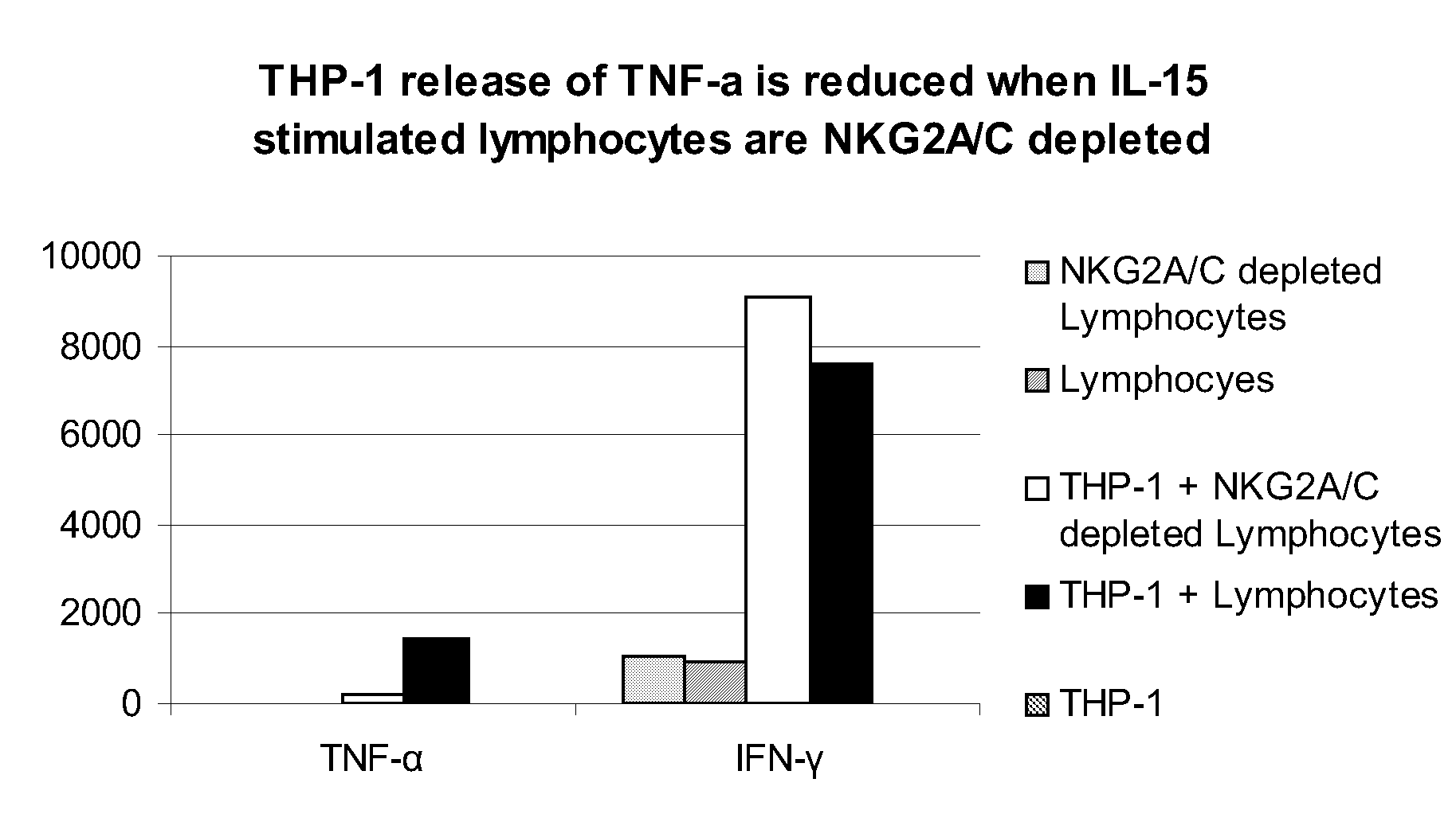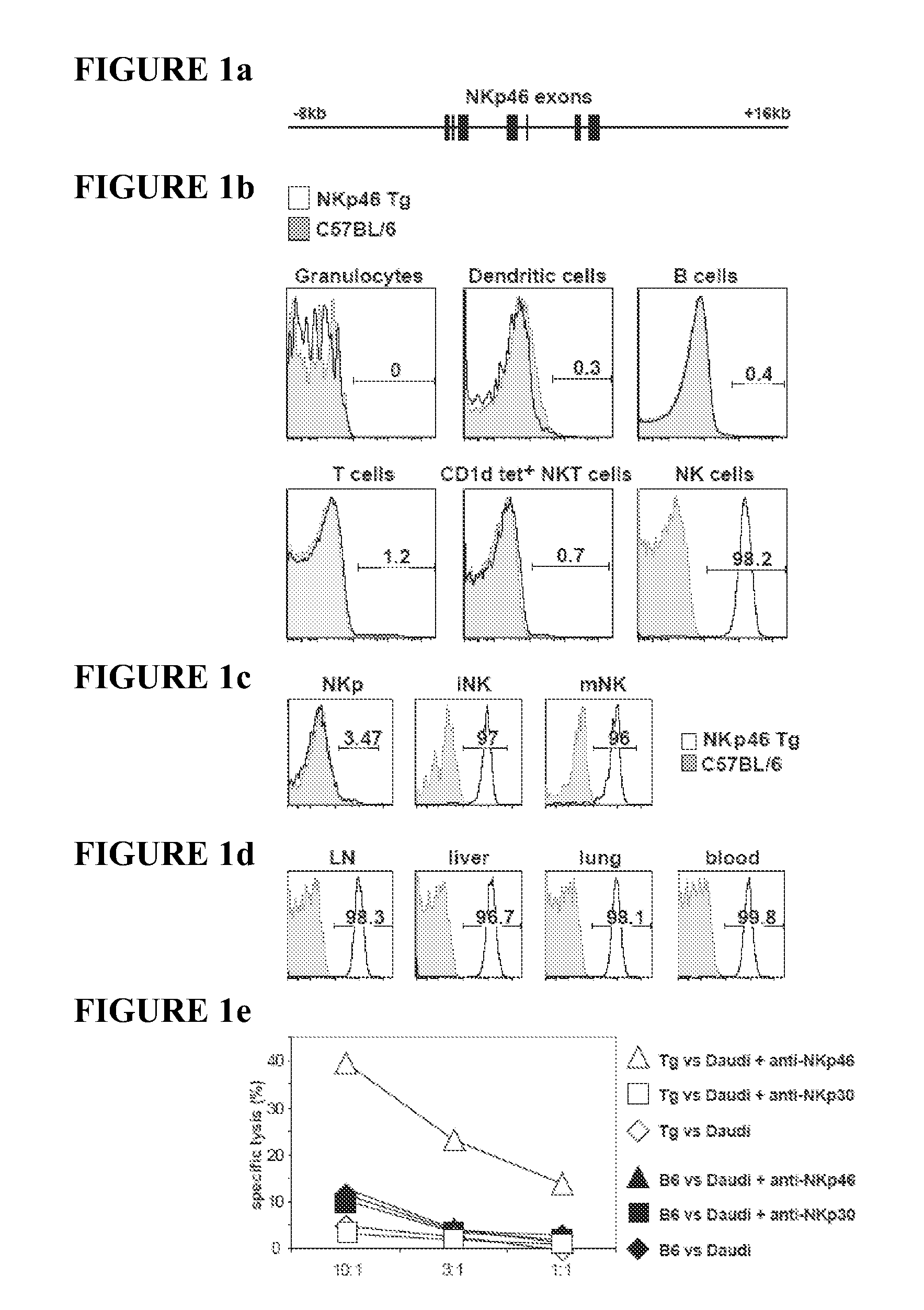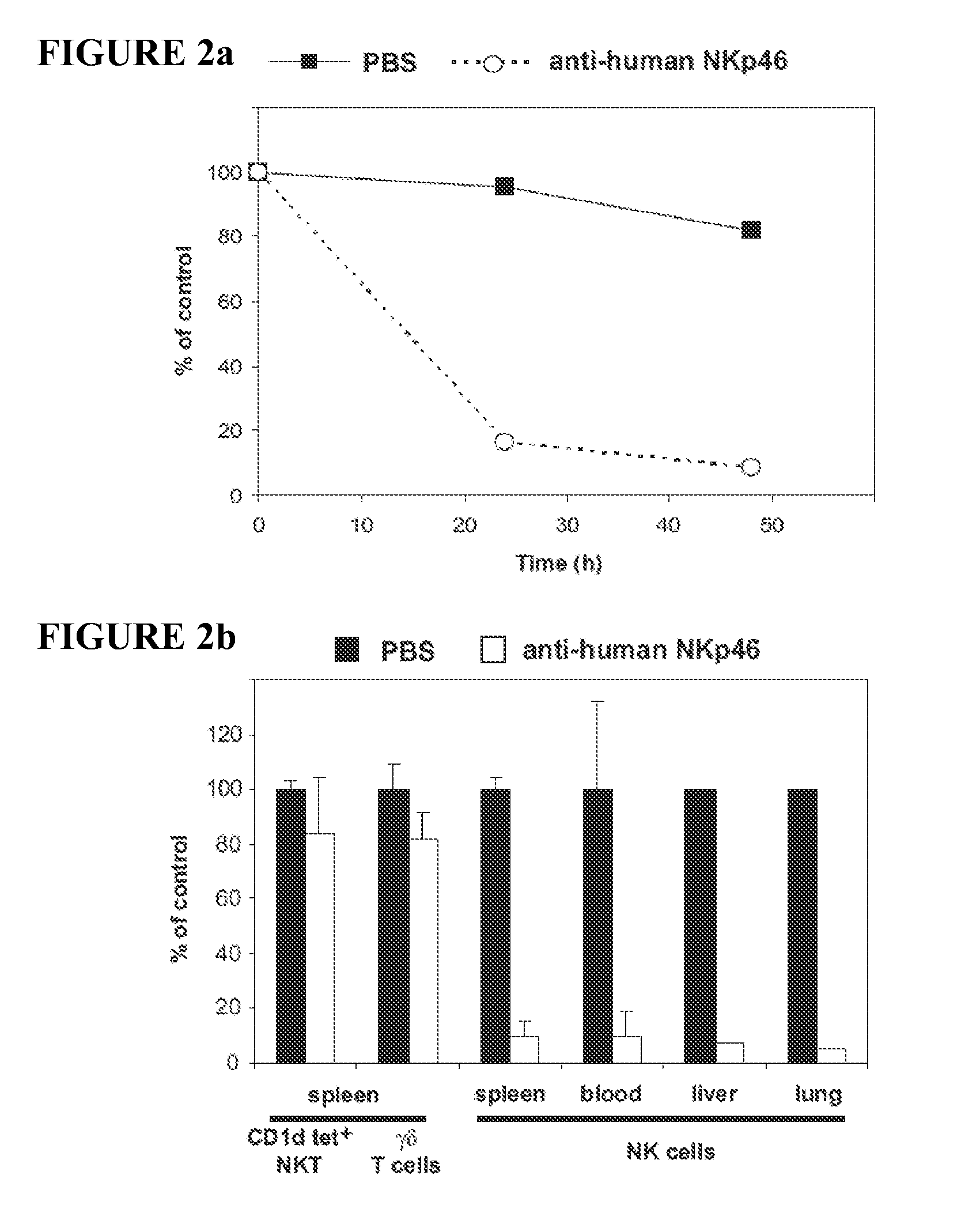Compositions and Methods for Treating Proliferative Disorders
a technology of proliferative disorders and compositions, applied in the field of methods of treating proliferative disorders, can solve the problems of few effective therapies for the treatment of established immune disorders, and the death of diseases, and achieve the effects of reducing inflammation, reducing proinflammatory cytokines, and decreasing the number of activated nk cells
- Summary
- Abstract
- Description
- Claims
- Application Information
AI Technical Summary
Benefits of technology
Problems solved by technology
Method used
Image
Examples
example 1
Generation of mAbs Specific to NK Cell Receptors
[0151]Novel monoclonal antibodies are generated by immunizing 5 week old Balb C mice with activated polyclonal or monoclonal NK cell lines, e.g., as described in Moretta et al. (1990) J Exp Med. 172(6):1589-98. After different cell fusions, the mAbs are first selected for their ability to specifically recognize one or more NK cell receptors, such as KIR2DL1, KIR2DL2, KIR2DL3, KIR2DL5A, KIR2DL5B, KIR3DL1, KIR3DL2, KIR3DL3, KIR2DS1, KIR2DS2, KIR2DS3, KIR2DS4, KIR2DS5, KIR3DS1, CD94, NKG2A, NKG2C, NKG2D, NKG2E, NKG2F, NKp30, NKp44, NKp46, etc. Positive monoclonal antibodies are further screened for their ability to specifically bind to NK cells taken from patients with an immunoproliferative disorder (e.g. NK-LDGL, rheumatoid arthritis, etc).
example 2
Purification of Peripheral Blood Lymphocytes (PBL) and Generation of Polyclonal or Clonal NK Cell Populations
[0152]Peripheral blood lymphocytes (PBL) are derived from NK-LDGL patients or patients with another immunoproliferative disorder, or healthy donors by Ficoll-Hipaque gradients and depletion of plastic-adherent cells. In order to obtain enriched NK cells, PBLs are incubated with anti-CD3 (JT3A), anti-CD4 (HP2.6) and anti-HLA-DR (D1.12) mAbs (30 min at 4 degrees C.) followed by goat anti-mouse coated Dynabeads (Dynal, Oslo, Norway) (30 min at 4 degrees C.) and immunomagnetic depletion (Pende et al. (1998) Eur. J. Immunol. 28:2384-2394; Sivori et al. (1997) J. Exp. Med. 186: 1129-1136; Vitale et al. (1998) J. Exp. Med. 187:2065-2072). CD3−4−DR− cells are used in cytolytic assays or cultured on irradiated feeder cells in the presence of 100 U / ml rlL-2 (Proleukin, Chiron Corp., Emeryville, USA) and 1.5 ng / ml PHA (Gibco Ltd, Paisley, Scotland) in order to obtain polyclonal NK cell ...
example 3
Flow Cytofluorimetric Analysis
[0153]Patient and control cells are stained with mAbs specific to a variety of NK cell receptors either that are either directly labeled or followed by PE- or FITC-conjugated isotype-specific goat anti-mouse second reagent (Southern Biotechnology Associated, Birmingham, Ala.). Samples are analyzed by one- or two-color cytofluorimetric analysis (FACScan Becton Dickinson & Co, Mountain View, Calif.) (see, e.g. Moretta et al. (1990) J. Exp. Med. 171:695-714).
PUM
| Property | Measurement | Unit |
|---|---|---|
| Fraction | aaaaa | aaaaa |
| Fraction | aaaaa | aaaaa |
| Composition | aaaaa | aaaaa |
Abstract
Description
Claims
Application Information
 Login to View More
Login to View More - R&D
- Intellectual Property
- Life Sciences
- Materials
- Tech Scout
- Unparalleled Data Quality
- Higher Quality Content
- 60% Fewer Hallucinations
Browse by: Latest US Patents, China's latest patents, Technical Efficacy Thesaurus, Application Domain, Technology Topic, Popular Technical Reports.
© 2025 PatSnap. All rights reserved.Legal|Privacy policy|Modern Slavery Act Transparency Statement|Sitemap|About US| Contact US: help@patsnap.com



